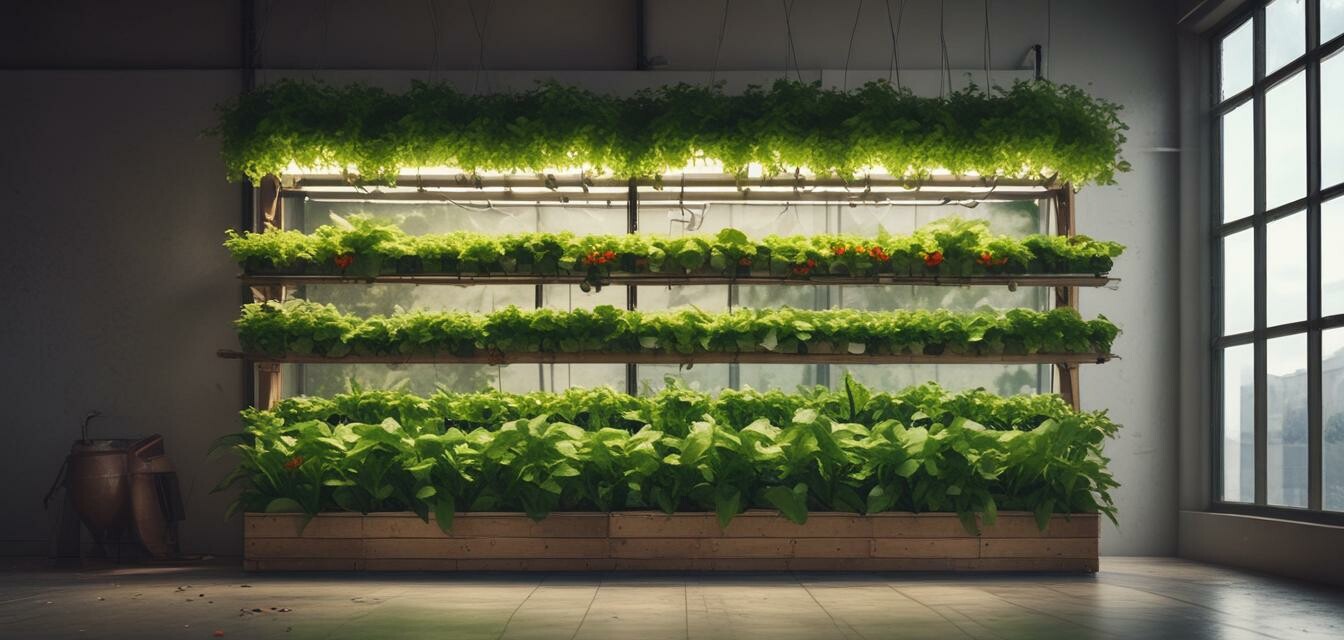
Upcycling in Hydroponics: Creative DIY Projects
Key Takeaways
- Upcycling materials reduces waste and creates unique gardening systems.
- Utilizing household items can lead to cost-effective hydroponic setups.
- Creative DIY projects inspire innovation and sustainability in gardening.
- Explore various materials that can be repurposed to enhance your hydroponic garden.
- These projects cater to all skill levels, from beginners to experienced hobbyists.
Are you looking to combine your love for gardening with creativity and sustainability? Upcycling in hydroponics offers a fantastic opportunity to make use of materials that would otherwise end up in landfills. In this article, we’ll explore innovative DIY projects that showcase how you can repurpose different items into functional hydroponic systems.
Why Upcycle for Hydroponics?
Upcycling entails transforming waste materials into products of higher quality or environmental value. In hydroponics, this practice not only helps in reducing waste but also encourages the use of creative solutions in gardening. Here are a few benefits of upcycling in hydroponics:
- Reduces environmental impact by minimizing waste.
- Promotes creativity and innovation in gardening approaches.
- Offers budget-friendly gardening solutions.
- Encourages experimentation with different materials to see what works best.
Unique Upcycling Ideas for Hydroponic Systems
1. Plastic Bottles
Old plastic bottles are one of the easiest and most accessible materials to repurpose for hydroponic gardening. They can be cut and transformed into vertical planters, providing ample space for plant growth.
How to Create a Plastic Bottle Hydroponic System:
- Gather several plastic bottles and cut them in half.
- Fill them with a nutrient-rich solution.
- Insert net pots to hold your desired plants.
- Stack the bottles vertically and ensure proper drainage.
2. Wooden Pallets
Wooden pallets can be adapted into an attractive and functional hydroponic growing system. They can be used horizontally or vertically, allowing for space-efficient growth.
Steps to Make a Pallet Hydroponic Garden:
- Choose a sturdy wooden pallet and clean it properly.
- Line the bottom with a waterproof tarp to hold in the nutrient solution.
- Attach plastic containers or net pots to the pallet to hold your plants.
- Fill with nutrient-rich water and maintain a consistent flow.
3. Old Containers and Jars
Repurposing old containers and jars is an excellent way to create mini hydroponic systems. This is especially great for small herbs or greens.
Creating Hydroponic Jars:
- Select jars or containers of various sizes.
- Fill each with a mix of clay pebbles and a nutrient solution.
- Insert plants through the lid with a snug fit.
- Place them on a windowsill for optimal sunlight.
4. Colanders
Colanders are handy tools that can also serve as hydroponic planters. Their design allows for excellent drainage while providing ample space for plant roots.
Building a Colander Hydro System:
- Get a sturdy colander (preferably plastic).
- Place it atop a container filled with nutrient-rich water.
- Add net pots or seedlings to the colander for growth.
- Ensure the bottom of the colander is submerged in the water for nutrient absorption.
5. PVC Pipes
PVC pipes can be transformed into an efficient hydroponic system, perfect for larger scale gardening.
PVC Hydroponic System Steps:
- Choose a length of PVC pipe and cap the ends.
- Drill holes on the top for the net pots.
- Paint the pipes to block light and prevent algae growth.
- Set up a water pump to circulate the nutrient solution.
Maintaining Your Upcycled Hydroponic System
Once you've created your upcycled hydroponic system, maintenance is crucial for a successful gardening experience. Here are some tips:
- Regularly check the nutrient levels and refill as needed.
- Monitor pH levels to ensure optimal plant growth.
- Clean the system regularly to prevent algae and debris buildup.
- Prune your plants to promote healthier growth and maximize space.
Explore More DIY Hydroponic Projects
Upcycling in hydroponics not only promotes sustainability but also enhances your gardening skills. If you're interested in other creative hydroponic projects, feel free to explore our DIY projects page for more inspiration.
Pros
- Cost-effective solutions using readily available materials.
- Encourages sustainability practices.
- Enhances creativity and innovation in gardening.
- Generates unique garden displays.
Cons
- May require some initial investment in tools.
- Not all materials suit every type of plant.
- Time-consuming to set up and maintain.
Tips for Beginners
- Start small with easy-to-find materials and simple designs.
- Research the plants you want to grow to understand their needs.
- Take notes on your progress and adjust accordingly.
- Join forums or community groups to share your experiences and learn from others.
Final Thoughts
Embracing upcycling in your hydroponic gardening journey is not only a sustainable choice but also an exciting way to explore your creativity. With so many materials at your disposal, the possibilities are endless. So, gather your old items, roll up your sleeves, and dive into these fantastic DIY projects that can enhance both your gardening experience and the environment.

